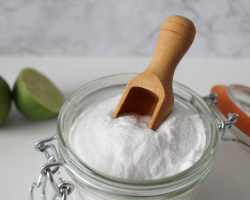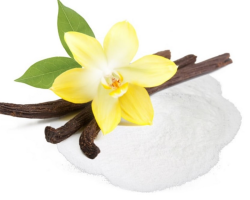What is the difference between whole grain flour and ordinary wheat? Details in the article.
Content
- Whole grain products, cereals: what are these, the list?
- What is the difference between whole grain flour and ordinary wheat?
- What is the difference between pendant flour and whole -grain rye?
- What is the difference between wallpaper flour and whole grain?
- What is the difference between whole -grain flour and solid -hearted?
- What is the difference between rice flour and whole grain?
- What is the difference between 2 varieties and whole -grain flour?
- What is the difference between whole grain flour and bran?
- Which cereal is the most useful: what is more useful rice, buckwheat or wheat?
- Video: says the technologist - all about whole grain flour
- Video: about varieties of flour- how is each variety it turns out and why is it so called?
- Video: 15 types of flour - what flour to choose?
Flour is the main and obligatory ingredient of any pastries. There are a lot of types of this product. At the same time, for many people far from culinary art, the fact that in addition to familiar and all the usual white flour can be the discovery, whole grain is more popular.
Read on our website another article on the topic: "How can you replace flour in baking?".
We will tell you about what whole grain flour is and how it differs from other species in this article. Read further.
Whole grain products, cereals: what are these, the list?

Any flour is made of cereal. Whole grain flour is no exception and produce it from whole grains. About what products, cereals are belonging to the category of whole grains, we will tell further in the article.
First of all, it is worth saying that all the seeds of cereals that are not cleansed from the embryo and the shell fall into the whole -grain category. Of course, the list of such cereals is very large. Here are the most famous and popular:
- Wheat
- Rice
- Buckwheat
- Corn
- Lentils
- Barley
- Oats
- Millet
- Rye
- Amaranth
- Kinoa
- Polba and others.
Separately, it is worth telling about the search and choice of whole grains. In this matter, you should not "believe the eyes." Even the cereal that looks at first glance as an all -grain, it may actually not be such and be crushed. Although the second is also popular. When choosing a whole -grain groats, you must first pay attention to the safety of the embryo and the shell.
What is the difference between whole grain flour and ordinary wheat?

As already written above, whole grain flour is very popular. It can even be argued that in this indicator it can compete with ordinary, white. The reasons why people prefer whole -grain flour to replace the usual wheat is a lot. However, it is impossible not to mention the differences that exist between these two types of this product. Here they are:
- Color
The first difference between whole grain flour and ordinary, which is visible at the first glance at the product is color. So, whole grain flour is darker, thanks to the preservation of bran and grains of grain in it. At the same time, initially lighter wheat flour, often also bleached with chemistry.
- Vitamins
The second important difference between whole grain flour and wheat, is a higher content in the first vitamins - B5, B3 and B1. In addition, whole grain flour is more rich in iron, protein and calcium. As for white flour, despite the great taste, it loses almost all nutrients at the production stage. The main reason for this disadvantage is that almost any modern mill is directed towards mass production.
After reading all the above, you might think that whole grain flour is better than wheat. But not everything is so clear. So, for example, whole grain flour has a short shelf life, which is only a few months. The reason for this is the preservation of bran and the embryo, which in turn contain perishable nutrients and oils. Do not forget that all -grain flour is very fond of various insects and flour bugs.
What is the difference between pendant flour and whole -grain rye?

Another variety of flour, which many people could not even hear about is the peeler. We will tell you about what kind of flour is and how it differs from the whole -grain rye.
Patriotic is a variety of flour made from all -beamed rye grain And subjected to a sift procedure after 450 μm sieve. Speaking about the differences in the neoprine flour and the whole -grain, the following points should be called:
- Raw materials
For the production of whole grain flour, whole grain is used, which is not subjected to any processing, except for the grinding procedure. In turn, in the production of peeping flour, raw materials are the nutrient part of the grain from which the outer shell is removed.
- Grinding
The whole grain flour is ground once, unlike the peeled, the grinding of which is more subtle.
- The content of nutrients
Whole grain flour contains a large amount of nutrients, oils, vegetable fats and fiber. Remote flour cannot boast with such an abundance, since it contains a minimum of bran and vegetable oil.
- Shelf life
Due to the large content of nutrients, whole grain flour quickly deteriorates. Riddle flour, in turn, has a long shelf life.
- Bakery properties
Surprisingly, despite the wealth of oils and trace elements, whole grain flour has low bakery properties. Riddle flour is considered an excellent product for bakery.
In general, we can conclude that neater flour is a more suitable baking product than whole grain, despite the nourishing of the latter.
What is the difference between wallpaper flour and whole grain?

The wallpaper flour is made of all-beamed grain and sifted after 710 micrometer sieves. This means that the largest cuts of bran remain in Sita. At the same time, many people mistakenly believe that wallpaper flour is the same as whole grain. In fact, these are two different products that have many differences.
- Production
As already written, whole grain flour is made of whole grain and not subjected to sifting. Thanks to this, it is possible to preserve 100% raw materials in flour. Welding flour is carried out by one -chain grinding method. With this method, whole grain is also used, however, then the flour is sifted through a large sieve, removing the grain shell. After that, the share of the finished product cannot exceed 96%.
- Appearance
Both flour have a grayish color, however, their structure varies. So, for example, wallpaper flour has a more homogeneous structure, while whole -grain particles have different sizes.
- Useful material
And the wallpaper and whole grain flour is rich in vitamins and useful substances. However, in the first-their content is slightly lower due to sifting.
It is worth adding that wallpaper flour is considered more preferable for baking bread than whole grain, due to the more homogeneous structure of the first. However, it is not suitable for lush baking, like muffins and buns, since the crumb of it turns out to be too dense and rude.
What is the difference between whole -grain flour and solid -hearted?
The whole grain and holistic have very similar names, which at first glance can even be confused. However, how similar are these two varieties of flour and how do they differ?
In fact, the difference between whole and whole grain flour is minimal. This is the difference in the specifics of the grinding. The fact is that modern mills are equipped with two types of wagons: with steel and abrasive cylinders. Thanks to this, the mill can conduct two types of grinding:
- Simple - using an abrasive type cylinder. With this grinding method, all grain is crushed.
- Serving - requires the use of a steel cylinder. In this case, the grain is less injured, due to which it is possible to maintain the integrity of the shells and, as a result, get larger bran.
In general, it is possible to state the fact that the terms “whole -hearted” and “whole -grain” flour are identical.
What is the difference between rice flour and whole grain?

Despite the fact that rice flour has not yet has such a demand as ordinary or whole grain, its popularity is growing steadily. However, what is the difference between rice flour and whole grain?
- Nutrition
Despite the fact that rice flour is famous for the high content of vegetable oils and nutrients, to whole grain flour in this regard is far away.
- Bakery properties
Unlike whole grain, rice flour does not contain gluten, so it is impossible to make yeast dough from it. This means that rice flour has very low bakery properties.
In fairness, it is worth noting that despite all the shortcomings, rice flour is well absorbed, contains a large amount of vegetable protein and has a positive effect on the cardiovascular system. In addition, this type of product does not contain gluten, due to which it is often added to dietary and baby food.
What is the difference between 2 varieties and whole -grain flour?
Many housewives often have the question: how does 2 grades flour differ from whole grain? Really interesting what is the difference and is it at all?
- The first and most important difference between second -grade flour and whole grain is the more rough grinding.
The second difference is bakery properties. So, second -grade flour is not suitable for all pastries. For example, pasta is well obtained from such flour, but at the same time, it is absolutely not suitable for the preparation of cakes, cakes and biscuits.
It is worth adding that it is better to use the highest grade to prepare hot baking. However, the second -grade foods created from flour are characterized by a lower calorie content.
What is the difference between whole grain flour and bran?

Another question that can be heard when discussing flour: how does the whole -grain flour differ from bran?
- To begin with, it is worth saying that bran is a shell of grain.
- The main difference between the flour and bran is the size of the particles, which are much smaller in the latter.
- In addition, bran, like flour, consists of fiber, but the former is much more calorie and heavier.
It is worth adding that bran contain a large number of useful trace elements and vitamins, as well as flour. They are a powerful source of proteins, fats and carbohydrates.
Which cereal is the most useful: what is more useful rice, buckwheat or wheat?
Krupa is the basis of a healthy diet, and porridge is the most useful food. These words are familiar to every person, since childhood. But are these statements correct and if so, which cereals are more useful - rice, buckwheat or wheat?
To begin with, it is worth saying that the utility of cereals is determined by the content of beneficial substances, vitamins and plant proteins in it. Based on these indicators, the following cereals can be distinguished:
Buckwheat:
- Undoubtedly, the most useful cereal.
- It contains a huge number of vitamins and trace elements.
- In addition, buckwheat cereals boast of record protein content - 12 grams per 100 grams of product.
Oat groats:
- The second place is occupied by the famous oatmeal.
- This cereal, as well as buckwheat, can be safely called a storehouse of vitamins and useful trace elements.
- In addition, oatmeal is easily absorbed.
Pearl barley:
- The third line in the list of the most useful cereals is barrel.
- This product is very rich in slow carbohydrates, and also contains a large number of useful macro and trace elements.
- However, preparing this cereal is more difficult than the two previous ones from this list.
It remains to add that the popular and everyone’s favorite rice, unlike the above brothers, is not included in the lists of beneficial cereals. Therefore, buying it for a healthy diet is definitely not worth it, except for taste. The same can be said about wheat. It contains gluten on which most people are allergic (it proceeds very difficult, with complex symptoms). If allergies to this substance, then you can use wheat due to the beneficial substances and vitamins contained in it, which give strength to the body and add energy.
In conclusion, it is worth recalling that until recently, in the days of the USSR, whole grain flour was considered a low -grade product and went mainly for pets feed. However, times have changed today, whole grain products are very popular among supporters of a healthy lifestyle. Even WHO recognized this cereal of one of the foundations of a healthy diet, along with fruits, vegetables and beans.
Video: says the technologist - all about whole grain flour
Video: about varieties of flour- how is each variety it turns out and why is it so called?
Video: 15 types of flour - what flour to choose?
Read on the topic:







